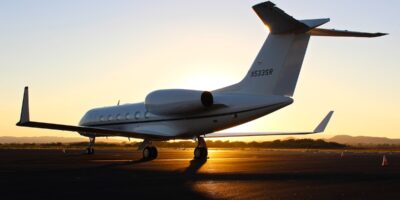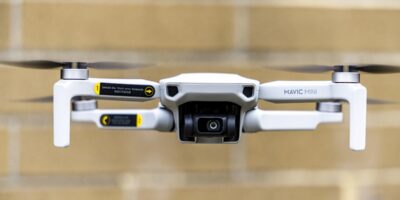Understanding the Fat Albert Plane: A Key Component of the Blue Angels Fleet

The aircraft known as the Fat Albert is a C-130 Hercules operated by the United States Marine Corps. It’s an integral part of the Blue Angels, a flight demonstration squadron that showcases aerobatic techniques. Unlike the sleek F/A-18 Hornets flown by the Blue Angels pilots, Fat Albert is large and robust. It serves a unique role, transporting personnel, equipment, and sometimes performing demonstrations alongside the faster jets.
The Role of Fat Albert in Air Shows
Fat Albert’s main function is logistical support. It carries the Blue Angels’ ground crew and essential gear to various performance locations. This support is vital to the squadron’s operation, ensuring that each show is executed smoothly. Moreover, Fat Albert occasionally participates in air show performances. It can demonstrate short-field takeoffs and high tactical maneuvers, showcasing the versatility and power of the C-130 Hercules.
A Closer Look at the C-130 Hercules
The C-130 Hercules, designed by Lockheed Martin, first flew in 1954. It has set numerous records throughout its long service. The aircraft is renowned for its ruggedness and operational flexibility. It can be used for various purposes, including troop transport, medevac, and aerial refueling. Its four turboprop engines give it the power needed for short off-and-landing capabilities, enabling operations from unimproved airstrips. This makes it well-suited for both military and humanitarian missions worldwide.
Historical Significance and Evolution of Fat Albert
The origins of Fat Albert within the Blue Angels team date back many years. The aircraft has undergone various updates and modifications to enhance its performance and capabilities. New avionics and systems have been integrated over time, aligning with modern standards and ensuring safety and efficiency. These ongoing improvements help maintain its role within the squadron while adapting to changes in aviation technology and demands.
Technical Specifications and Features
- Engines: Four Allison T56-A-15 turboprops
- Wing Span: 132 feet 7 inches
- Length: 97 feet 9 inches
- Height: 38 feet 10 inches
- Cruise Speed: 320 knots (368 mph)
- Range: Over 2,000 nautical miles
- Maximum Takeoff Weight: 155,000 pounds
These specifications enable the C-130 Hercules to operate efficiently under a variety of conditions. Its design allows it to perform numerous roles with ease. The aircraft’s longevity is a testament to the soundness of its engineering and design.
Performance Enhancements and Upgrades
Fat Albert has received enhancements over the years to ensure it keeps pace with modern aviation demands. Upgrades have included avionics overhauls, structural refurbishments, and engine improvements. These upgrades enhance its safety, efficiency, and environmental compatibility. Each improvement helps extend the life of the aircraft, preserving its role within the Blue Angels for years to come.
The Crew Behind Fat Albert
The crew that operates Fat Albert is composed of skilled Marine Corps aviators and technicians. They bring expertise in flying and maintaining this unique aircraft. Each crew member holds a crucial role in ensuring the safe operation and readiness of the plane. Their coordination and teamwork are vital. This ensures uninterrupted support for the Blue Angels at airshows and events worldwide.
The Spectacle of the Fat Albert Flight Demonstration
When Fat Albert takes to the skies at an air show, it’s not just about logistics. It’s about demonstration. The aircraft performs maneuvers like the jet-assisted takeoff (JATO). This involves the use of rocket packs to enable short takeoffs with impressive climbs. Though these dramatic maneuvers are not used as regularly today, they were once a highlight of the Fat Albert performance. The demonstration serves to illustrate the capabilities and raw power of the C-130 Hercules.
Fat Albert in Media and Pop Culture
Beyond its operational role, Fat Albert has fascinated aviation enthusiasts and the public alike. It has appeared in documentaries and features about the Blue Angels. Its distinct appearance and association with the Blue Angels make it an icon. This representation in media highlights the enduring appeal and intrigue of the aircraft.
Challenges Faced by Fat Albert
Operating an aircraft like Fat Albert comes with unique challenges. These include maintenance requirements due to its age and demanding performance schedule. Furthermore, the complexity of demonstrating and transporting safely poses its own set of demands. The crew’s expertise and dedication mitigate these challenges, ensuring reliable and compelling performances.
Future Prospects for Fat Albert
Looking ahead, Fat Albert will continue to evolve with advancements in aviation technology. Its ongoing updates ensure it remains a viable and effective component of the Blue Angels team. With every upgrade, new capabilities and efficiencies promise to enhance its role as both a support and demonstration asset.
Fat Albert remains a testament to the capabilities of the C-130 Hercules. Its role with the Blue Angels showcases both its versatility and the professionalism of the United States Marine Corps. Enthusiasts and spectators alike continue to be captivated by its performances at air shows worldwide.
Recommended Aviation Gear
David Clark H10-13.4 Aviation Headset – $376.95
The industry standard for aviation headsets, trusted by pilots worldwide.
Pilot’s Handbook of Aeronautical Knowledge – $25.42
The official FAA handbook – essential reading for every pilot.
As an Amazon Associate, we earn from qualifying purchases.




Subscribe for Updates
Get the latest articles delivered to your inbox.
We respect your privacy. Unsubscribe anytime.